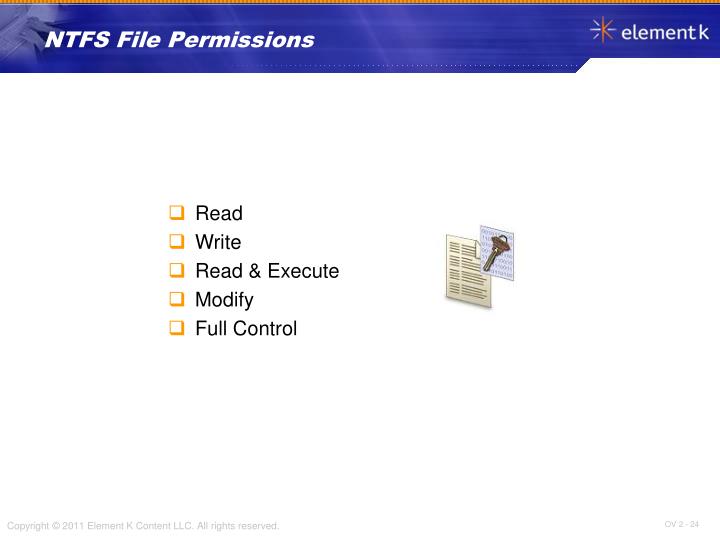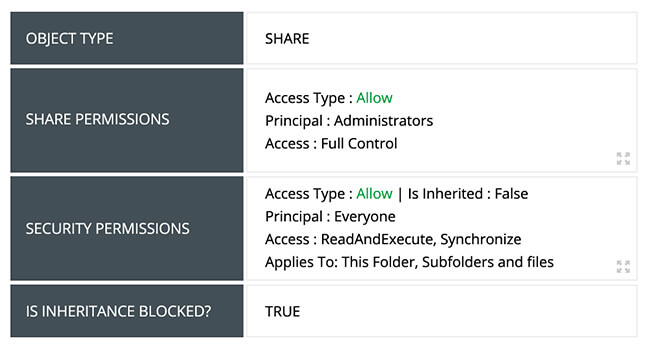

Set the Share name and Comments as appropriate. In the Advanced Sharing dialog box, check Share this folder.

#FREEFILESYNC NTFS PERMISSIONS WINDOWS#
In User Account Control, click Continue to accept the prompt that Windows needs your permission to perform the action. On the Sharing tab, click Advanced Sharing. In Windows Explorer, right-click the folder you want to share, and then click Properties. MachineAccount$ is the Web server's machine account, as these logs are written by HTTP.SYS. If the server administrator does not wish to share these files or wants to provide an alternate method for determining traffic, these files can be stored elsewhere. This is the folder used to store the log files for the Web site, which allow a site owner to see their traffic patterns.
#FREEFILESYNC NTFS PERMISSIONS FULL#
These logs are written by the worker process identity, App Pool Username.Į:\Content\\Logs\W3SVCLogFiles (the container for W3SVC traffic logs)Īdministrators - Full Control System - Full Control MachineAccount$ - Full Control This is the folder used to store Failed Request log files, which allow a site owner to diagnose problems with their Web site. It is not recommended that you put this folder in any location accessible from a Web browser, for security purposes.Į:\Content\\Logs\FailedReqLogs (the container for failed request tracing logs)Īdministrators - Full Control System - Full Control App Pool Username - Full Control Note that this folder for logs is stored ABOVE the root of the site, so that it is not accessible by a visitor browsing the site. App Pool Username is used as both the application pool identity and the anonymous username for the Web site.Į:\Content\\Logs (the container for logs)Īdministrators - Full Control System - Full Control Site Owner - Read This is the root of a Web site belonging to the user account.

The Site Owner should be able to read this folder but does not need write access.Į:\Content\ \wwwroot (the IIS home directory for the site)Īdministrators - Full Control System - Full Control Site Owner - Modify App Pool Username - Read

This folder is used as a container for folders like the site's home directory and its log files. It does not need permissions for any accounts aside from the built-in Administrators group and System account.Į:\Content\ (the container for a specific site or user)Īdministrators - Full Control System - Full Control Site Owner - List Folder Contents The physical path will be restricted to actual needed permissions.Īdministrators - Full Control System - Full Control The share permissions need to allow the administrators and site accounts to access the content. Pathĭomain Administrators - Full Control Domain Users - Change MachineAccounts$ - Full Control Based on the shared hosting environment used, server administrators should develop their own custom permissions that meet their needs. The following table lists permissions that were used for the file server share and folders in the Shared Hosting Setup mentioned in the Planning the Web Hosting Architecture section of the Hosting Guidance. This involves locking down permissions on the share and physical folders. The file server permissions must be carefully implemented to provide appropriate access to content.


 0 kommentar(er)
0 kommentar(er)
